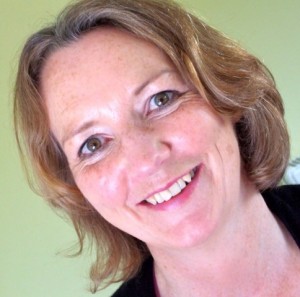It doesn't matter in which decade you were an adolescent, My Mad Fat Diary will resonate. It's dark, funny, touching and painfully true.
I was never fat though I thought I was, agonising over my weight when it crept over - shock horror! - 9st and never mad though it's jarring to re-read my diaries and see the young me passing off casual mention of suicidal thoughts as "nervous tension" , but watching this programme is a sweet agony. It transports me right back to those teenage years of acute self-consciousness and vulnerability when binge-eating followed by extreme dieting, anxiety about my appearance, and crippling shyness dominated my life.
"You can be fat and nuts and a virgin when you are 17 and things can still turn out ok."
My diary was my refuge: a nonjudgmental receptacle for every passing thought and emotion; stuff I wouldn't have dreamed of sharing with my friends, siblings or my parents. Here I am at 13, escaping not just into my diary, but into fiction: "I'm depressed. I've just been reading Gone With The Wind. I sympathise with Scarlett, she's feeling a bit like me at the moment, but has more reason for it." Scarlett had the American Civil War to contend with; I was struggling to fit in at secondary school, but, you know, we both had it hard.
Rae Earl started her diary in response to a four-month spell in a Lincolnshire psychiatric hospital. As she writes in the introduction to her first book, published when she was in her 30s, she wanted teenagers to know that: "You can be fat and nuts and a virgin when you are 17 and things can still turn out ok." These days Rae earns her living as a writer and lives with her family in Tasmania.
Many simply wanted to know "Am I normal?", but there was a real need for information, too.
Series two of the TV adaptation opened with Rae starting sixth form college, still in therapy, still "a mess", living with her eccentric mum and her mum's young Tunisian husband. She's dealing with the aftermath of the death of a friend, and trying to cope with the realisation that her attraction to her "fit" friend, Finn, is requited. She can't believe she's going out with him. As she says to her therapist, Kester warmly played by Ian Hart : "It's embarrassing to be next to him. I'm embarrassed for him."
In the 1980s I worked on Just Seventeen magazine, where one of my tasks was sub-editing our resident agony aunt Melanie McFadyean's advice column. Melanie was deluged with letters from girls and sometimes boys desperate for reassurance. Many simply wanted to know "Am I normal?", but there was a real need for information, too. As Rae Earl mentions in the first instalment of her diaries: "Bethany came round - she is late and BRICKING IT. Didn't know what to say at first. I said what we need is a Brook Advisory Clinic because that's what Melanie in Just Seventeen always recommended. Of course there isn't one in Stamford."
With social media having pushed teen magazines to the margins, the role of the "official" agony aunt is in decline. I think Rae Earl is, in some part, filling the gap.
And does the internet age spell the death of the diary also? Apparently not. Research conducted by E4 last year found that girls are cautious about what they write online, with 78 per cent having worries about posting thoughts and feelings on social media. Journals, meanwhile, are more popular than ever: 83 per cent of girls aged between 16 and 19 keep a pen-and-paper diary, compared with 69 per cent in the 1990s. And 64 per cent of teenage girls say that writing a personal journal makes them feel better. The diary as private therapist is alive and well. Though Rae claims in the afterword of her sequel that, having shared hers with the world, she'll be burning the originals on bonfire night.
Have you kept your teenage diaries? How did they help you? Do you ever re-read them? Please do comment.

